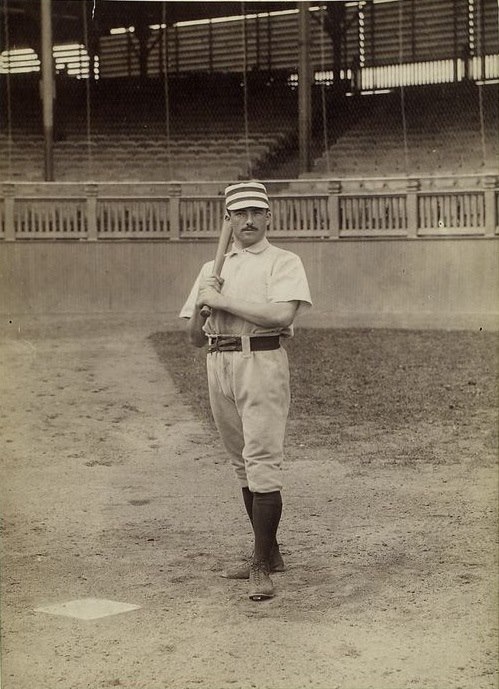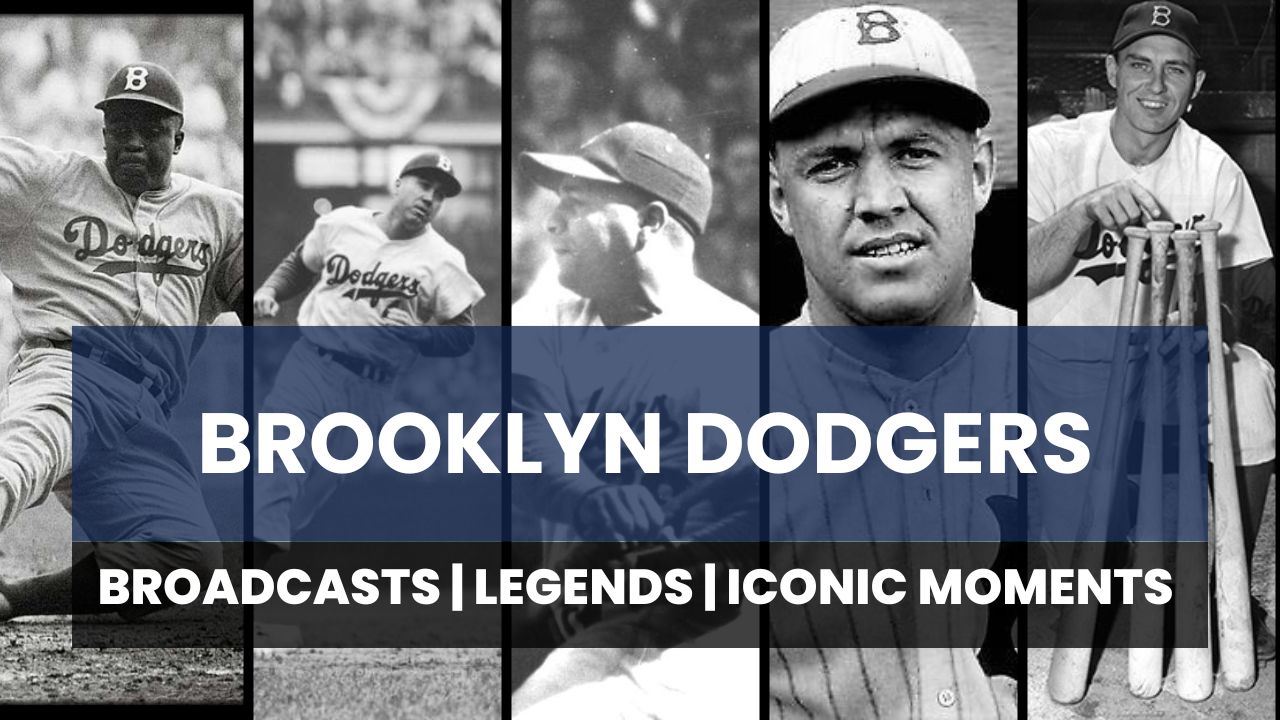Jim Fogarty Stats & Facts
Jim Fogarty Essentials
Positions: Outfield
Bats: R Throws: R
70 Weight: 180
Born: 2 12, 1864 in San Francisco, CA USA
Died: 5 20 1891 in Philadelphia, PA USA
Debut: 1884-05-01
Last Game: 1890-10-04
Full Name: James G. Fogarty
biography from Bobby King
One of the 19th century’s top defensive outfielders and an absolute terror on the basepaths, Jim Fogarty, despite his accomplishments, is statistically easy to overlook—that is, unless you do some digging. A .246 hitter over parts of seven big-league seasons (1884-90) spent primarily with the Philadelphia Quakers, Fogarty was nonetheless a very productive batsman. Said by one scribe to possess “the patience of Job,” Fogarty was a pitcher’s worst nightmare, able to foul off deliveries and “wait ’em out” like few others—which wasn’t easy considering it took five or more balls to constitute a walk before 1889. For an idea of what a pitcher (and catcher) was up against, look no further than his 1887 statistics—an NL-best 82 walks to go along with 102 stolen bases.
More than just a pest, Fogarty could make a pitcher pay if they got careless. For his career, the multi-talented speedster averaged 23 doubles, 11 triples, 66 RBI, 104 runs scored, 72 walks, 92 stolen bases, and 38 outfield assists per 154 games played. Yeah, you read that last number correctly. Primarily a right fielder, Fogarty gunned down 171 baserunners during his career—this despite playing only 685 games in the outfield! However, it wasn’t Fogarty’s arm that drew the most attention; it was his incredible range and penchant for spectacular, tumbling catches. The stats more than back up his reputation among contemporaries. He paced NL gardeners in range factor on three occasions; fielding percentage, putouts, assists, and double plays two times apiece.
In an 1890 interview with the Cincinnati Times-Star, former Boston manager Jim Hart—when asked to name “the finest fielder living”—gushed: “Fogarty is the king of them all. He can lay over Dickey Johnston or anybody else you could name. . . . Fogarty has no rival as a general fielder. Curt Welch, do you say? Why Curt is great in center field, but that is the easiest of the three to cover. . . . [W]hile in right and left, you have to do considerable gymnastics in a game. Fogarty can take a ball on the dead run and fire it home without a second’s hesitation. He doesn’t lose a moment in recovering.”
James G. Fogarty was born on February 12, 1864, in San Francisco. A well-liked, whip-smart lad, he later attended Saint Mary’s College of California. Jim began his major league career at age 20 with the 1884 Philadelphia Quakers; he posted a meager .212 batting average but starred in the field, finishing second among NL gardeners with a .915 fielding percentage. Fogarty hiked his average to .232 in 1885 and amassed 26 outfield assists while once again ranking second in fielding percentage. Having bulked up considerably during the off-season, the 5-foot-10-inch, 180-pounder came into his own in 1886, hitting .293 with 13 doubles, 47 RBI, 54 runs scored, and 30 stolen bases in only 77 games.
Fogarty’s 1887 statistics—as they looked at the time—were breathtaking. He hit .366 with career-highs in doubles (26), home runs (8), stolen bases (102), and runs scored (129). However, this was the year bases on balls were tallied as hits—a rule that Fogarty, who led the league with 82 walks, took full advantage of. Take away the free passes, and his average drops over 100 points to a more pedestrian .261—which is how baseball-reference.com and most record books list it.
As you might expect, the new rule was quite unpopular, except with the once middling batsmen who suddenly found themselves hitting .400. An editor with the Sporting Life was not amused: “That lying perjurer, the base-on-ball-base-hit, is seriously injuring the game with patrons,” he complained. “The invitation given to the batsman by the four-strike-five-ball business to tiresomely wait for a base on balls and be credited with a base hit is wearying spectators and prolonging the game and bringing censure on the umpire. It is making record players.”
With the rule rescinded, Fogarty fell back down to earth in 1888. The 24-year-old posted an anemic .236 average; however, he ranked among the league leaders with 58 steals (6th) and 53 walks (7th). One of the high points came on August 31, when he spoiled Jim Whitney’s no-hit bid. In its coverage of the proceedings, The Pittsburgh Dispatch noted: “The only home player who could connect with ‘Grasshopper’ Jim’s delivery was Fogarty, who secured a single and double.”
Fogarty would enjoy one of his best all-around seasons in 1889. He hit .259 with 17 triples, 107 runs scored, and an NL-best 99 stolen bases. In the outfield, he had no equals, finishing first among senior circuit gardeners in putouts (303), assists (42), range factor (2.76), and fielding percentage (.961). Fogarty, among the more vocal members of the Brotherhood of Professional Base-Ball Players, pro baseball’s first union, jumped to the upstart Players’ League in 1890. Popular and well-respected amongst his brethren, Jim was named player-manager of the circuit’s Philadelphia franchise.
From a statistical standpoint, the 1890 season was about par for the course: Fogarty played in 91 games, hit .239, walked 59 times, and stole 36 bases. As for his managerial career, that lasted only 16 games when the new club president, Henry Love, replaced him with pitcher Charlie Buffington. Fogarty, who claimed that Love physically threatened him, was incensed: “I shall not play ball again with the Philadelphia club as long as Mr. Love has anything to do with it,” he said. In response, Love wrote an open letter to the press: “The statement that I shook my fist in his face is a malicious lie. The statement that I stated that I was his equal—intellectually, morally and physically—is a malicious lie.” (Despite the drama and his previous declaration, Fogarty finished out the season.)
In February 1891, The Pittsburgh Dispatch reported that Fogarty was expected to sign with the Alleghenys (Pirates), but “is holding out for more money.” The unidentified scribe predicted that the addition of Fogarty—along with veterans Ned Hanlon and Billy Sunday—would give Pittsburgh “the best outfield in the country.” Tragically, it wasn’t to be. Though I can find no mention of his being sick in the local press, on May 20, 1891, the seemingly healthy Fogarty died from tuberculosis; he was 27 years old. (Tuberculosis zaps one’s lung capacity and energy, making his recent performance even more remarkable—if not downright heroic.)
The Pittsburgh Chronicle-Telegraph ran a glowing obituary, which read in part: “Possibly no more brilliant outfielder ever graced the profession than ‘Jimmie’ Fogarty, who died Thursday. He began his base ball career in his native state, California. . . . He had wonderful judgment of a fly ball, and local patrons will recall his brilliant running catches. He robbed [Jake] Beckley of a triple at Player’s Park last season by taking the ball off the fence. He was a dashing base runner, fair batsman and excellent thrower. He had scores of friends and was always jolly.”
On May 21, 1891, The New York Evening World noted: “John M. Ward this morning telegraphed an order to a Philadelphia florist to make a handsome floral piece for poor Jim Fogarty, and place it on his coffin, as a last offering from the Brotherhood. . . . [T]he players of the Brooklyn and Pittsburgh clubs will wear the usual badge of mourning—a crepe rosette.”
In April 1892, Hall of Fame hurler Jim “Pud” Galvin, who started the game on the mound, made one of 57 career appearances as an outfielder during the late innings of Pittsburgh’s home opener at Exposition Park. “Jimmy surprised few by his old-time form of pitching,” reported The Pittsburgh Dispatch, “but when he went into the field and performed feats that reminded one of the brilliant days of poor Jim Fogarty, the 2,000 onlookers were satisfied that there was a ‘ringer’ in the field. . . . Galvin hopped about the outfield like a lively lawn tennis player. . . . Old Sport really made a remarkable catch, in fact, two of them.”
In totality, Fogarty could be described as a combination of Roberto Clemente (defense and rifle-arm), Omar Moreno (stolen bases and low batting average), Johnny Pesky (walks and—well the name says it all), and Marvin Miller (union activist). One has to wonder: What might have been? With his incomparable defense and basepath virtuosity, Fogarty could’ve challenged “Sliding Billy” Hamilton as the pre-modern stolen base king, set unbreakable outfield assists records, and eventually become known as the 19th century’s defensive answer to Harry Hooper—or Tris Speaker, even.
Fogarty’s reputation as an outfielder extraordinaire remained a topic of discussion for years to come. As late as the 1930s, George Wright, Arlie Latham, Bobby Lowe, Cy Young—and a host of other old-timers and scribes—cited him as one of the best defenders of all-time.
✍️ Bobby King II
◾Sources: https://chroniclingamerica.loc.gov + https://sabr.org/rese…/how-bases-balls-were-scored-1864-1888 + https://www.newspapers.com + https://www.baseball-reference.com + https://www.baseball-almanac.com


